Menu
Table of contents
Then it turns out that the number has suddenly dropped immensely from previous weeks. Next, you try to figure out how high you rank in Google.
And what turns out? You're almost nowhere to be found in Google....
Sh*t! How can that be?
We're going to find out. This checklist will help you figure out what caused the drop!
Check 1: Failed or disappeared?
The first step is to find out if you have lost positions or if you simply can no longer be found in Google. By typing "site:yourwebsite.co.uk" into Google, you can see which pages have been indexed by Google.
Are there hardly any or no pages from your website here? If so, you have disappeared from the search results.
Are your pages not disappearing? Then look at the terms you were found on and find out which spot you are in.
Are you now on page 5 while before you were in spot 2? Then your page has dropped.
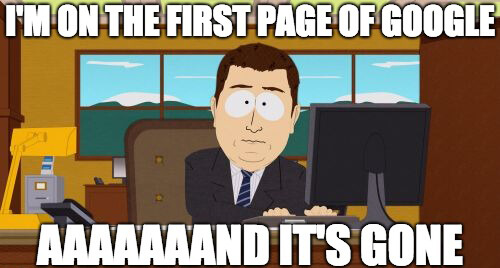
Check 2: Red card! Penalty!
If you do something online to your website that violates Google's guidelines then Google may have given you a penalty.
A penalty against, to be clear. This can happen, for example, when you have bought a lot of links to your website, abusing rich snippets markups or by misleading visitors.
Finding out if you've received a penalty is pretty simple, provided you have Google Search Console for your Web site. Don't have that?
Then first read the article I wrote about Google Search Console.
Back to figuring out the penalty. When you have received a penalty you will see a message in which Google reports what violation you received a penalty for and what you need to do to resolve it.
PS. A penalty can cause you to drop in Google, as well as make you impossible to find in Google.
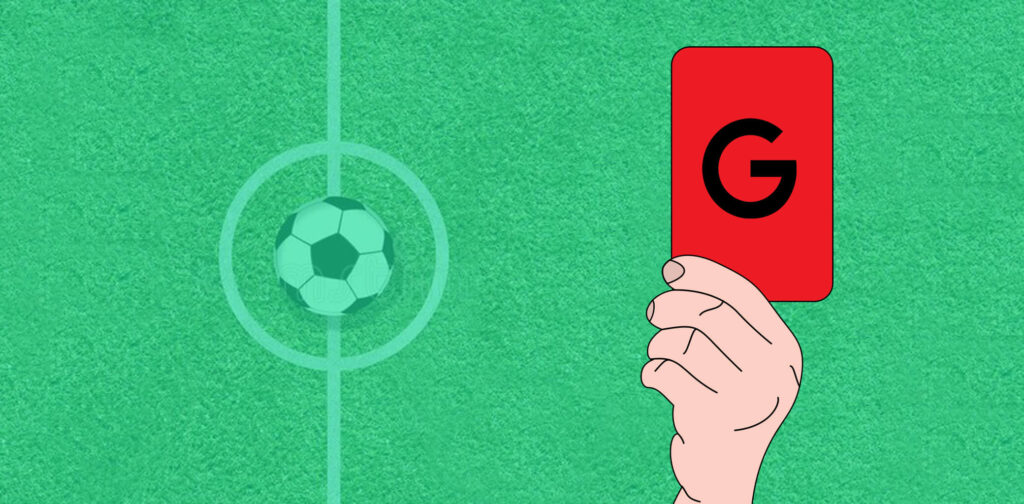
Check 3: Check your website's manual (Robots.txt)
You can think of the robots.txt as your website's manual The robots.txt allows you to tell the search engines which pages you do and do not want indexed.
Search engines can ignore the robots.txt in certain cases, just as you can ignore the Ikea manual (not recommended, by the way!).
Therefore, if a mistake is made in your website's manual, your website may just not be indexed.
Your website's robots.txt can be found (if you have one) when you type your website's URL into the browser with /robots.txt after it.
So with me that would be: https://onlinemarketingagency.com/robots.txt. For example, do you see Disallow: / here or Disallow: /blog here?
Then that is the reason your website, or parts of your website are no longer being indexed. Modifying the robots.txt also requires some knowledge.
Therefore, I recommend that you then ask your SEO specialist or website builder to adjust this.

Check 4: Check your site map (Sitemap)
Besides having a manual, your website also has a map of sorts. This is called the sitemap.
In a sitemap, you tell Google what URL each page has. You can therefore also think of the sitemap as a kind of table of contents.
But enough about its function. If you have a sitemap, you'll find it when you type your website's URL into the browser with /sitemap_index.xml or /sitemap.xml after it.
So with me, that would be https://onlinemarketingagency.com/sitemap_index.xml. The moment the page on which you have dropped significantly in Google is not in your sitemap, it is high time to add it.
This is because Google can't crawl the page properly because it doesn't know very well where the page can be found. If you have added the sitemap in Search Console, you can also see its status and how many web pages and images are indexed.

Check 5: The famous Noindex
The noindex is really the biggest SEO killer you can have. The moment your website is on noindex, it just doesn't get indexed.
So then you really can't be found in Google, even though your sitemap and robots.txt are complete and contain no errors. The scary thing about noindex can be that it only takes 1 click to have the entire website on noindex.
And that while the noindex can have by far the biggest impact on your findability. This has also gone wrong in the past with large organizations.
Like Transavia or when restyling Rabobank's website. But how do you check if your website is on noindex?
Very simple! Go to Seositecheckup's Noindex Checker and see if your website is on noindex.

Check 6: Wrong redirects (Redirects)
Have you recently switched from http://www.jouwwebsite.nl to https://jouwwebsite.nl, for example, and so your website has an SSL certificate?
Or maybe the URL structure of your website has been changed because the website builder made an adjustment? These could be reasons you dropped in Google.
After all, URLs have a certain value over time. And when you move content from the old URL to a new URL, of course you want that value you've built up to go with it.
You do that by setting up a redirect. But in addition, the redirects may have been set incorrectly by your SEO specialist or by your website builder.
For example, the wrong kind of redirect may be used. Actually, I always recommend discussing the redirects with the builder or SEO specialist.
Still want to figure it out yourself? Then always check first if a page returns a 404.
Namely, that means that the URL has not been properly modified or is not being redirected properly. In addition, your website should be set up so that you always get to the right place, regardless of whether you use your www, non-www, http or https.
Therefore, always test your website in the following 4 ways:
- http://www.jouwwebsite.nl
- https://www.jouwwebsite.nl
- http://jouwwebsite.nl
- https://jouwwebsite.nl
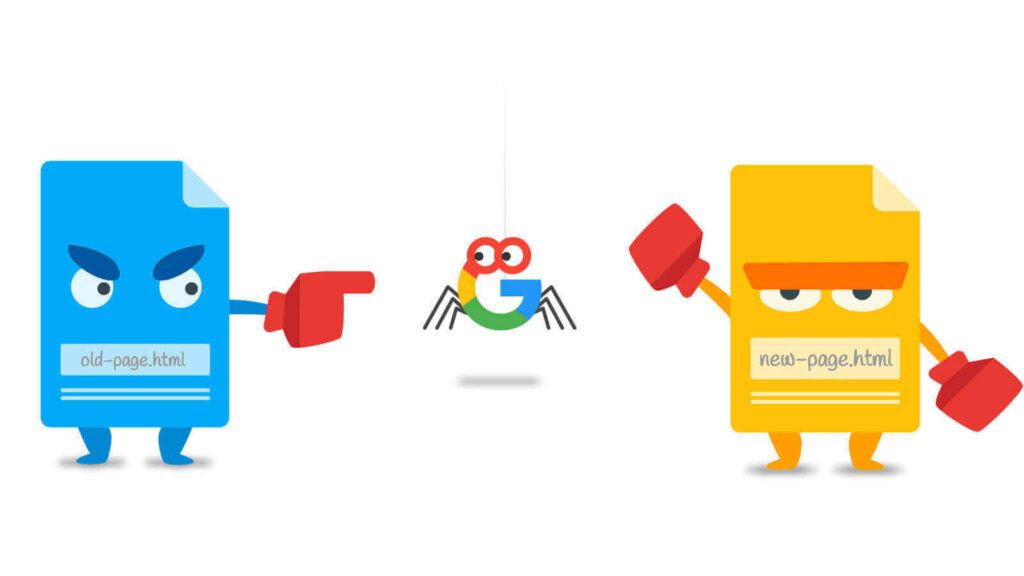
Source : https://www.j-26.com/blog/how-to-create-a-seo-friendly-redirect/
Check 7: Your website's link profile
Link building, in my opinion, is one of the most important parts of search engine optimization. And when you gain or lose a lot of links in a short period of time, you may just end up sinking in Google.
Now you're thinking: Huh? Gaining links and losing positions instead of rising? That's right!
When many bad links are created in a short time Google thinks: this is not natural and this is not allowed. For example, your competitors may have bought bad links for you from sites from, say, China and Russia with weird and irrelevant themes.
But on the other hand, your 10 best links may also disappear because someone has sold, removed or modified their link network.
Or it could just be that some of your guest blogs have been removed because of an online reorganization.
In short, when it comes to link building, there are a myriad of reasons why you have dropped in Google. My advice is: analyze your link profile with a tool of your choice and see if there are any major losses or increases in links.
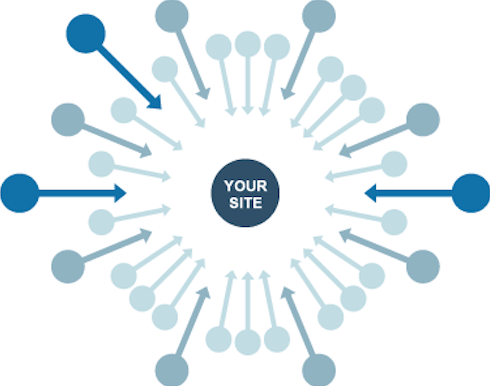
Check 8: Google has changed its algorithm
Google is a self-learning system that also makes its own adjustments to its system. This can cause your website to sink or rise in Google.
An example of an adjustment to the system, for example, is the separate indexing of mobile and desktop. Google rolled out this adjustment last year, which can result in fluctuations in indexation.
When you drop or disappear from the Google search results, I also recommend immediately looking to see if Google hasn't changed its algorithm in the past few days.
You can find this out by reading articles from Frankwatching, Marketingfacts, Seoroundtable or Searchengineland, among others. Moz also has a very handy list of Google updates.
You can find those here.

Check 9: Competitors accelerate
Of course, the reason you are dropping in Google may also be because your competitors are fully committed to online marketing. If you were in position 2 and you have suddenly been overtaken by 15 competitors, it is of course very illogical that all of them have invested heavily in online marketing.
But when you're in a niche market with 2 or 3 vendors, you may well find that both of your competitors have budgeted to pop online.
This article was written on Oct. 11, 2018 and updated on Nov. 9, 2021.









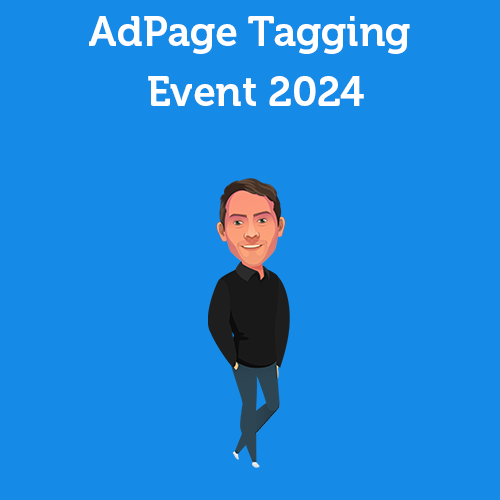

Written by: Daniel Kuipers
Daniel is the founder of Online Marketing Agency. He constantly scours the Internet for the latest gadgets and tactics and blogs about them in understandable language. Well, sometimes.